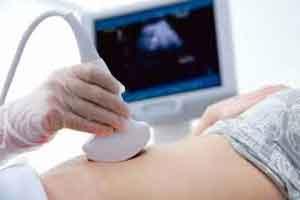- Home
- Editorial
- News
- Practice Guidelines
- Anesthesiology Guidelines
- Cancer Guidelines
- Cardiac Sciences Guidelines
- Critical Care Guidelines
- Dentistry Guidelines
- Dermatology Guidelines
- Diabetes and Endo Guidelines
- Diagnostics Guidelines
- ENT Guidelines
- Featured Practice Guidelines
- Gastroenterology Guidelines
- Geriatrics Guidelines
- Medicine Guidelines
- Nephrology Guidelines
- Neurosciences Guidelines
- Obs and Gynae Guidelines
- Ophthalmology Guidelines
- Orthopaedics Guidelines
- Paediatrics Guidelines
- Psychiatry Guidelines
- Pulmonology Guidelines
- Radiology Guidelines
- Surgery Guidelines
- Urology Guidelines
Point-of-Care Ultrasonography more sensitive,specific for detecting Fluid

Point-of-care ultrasonography (POCUS)—ultrasonography used by a clinician at the bedside to aid in diagnosis and procedural guidance—continues to spread throughout medical specialties and medical education.It is an increasingly affordable and portable technology that is an important part of 21st-century medicine which has the potential to expedite diagnosis and improve procedural success and safety.
In a systematic review, Rachel B et al. have vividly outlined basic concepts, applications and implications of Finding Fluid during Point-of-Care Ultrasonography.
The authors observed that a key use of POCUS is to detect fluid, and this is a cornerstone of POCUS teaching. POCUS has shown to be more sensitive and specific than physical examination for conditions such as ascites, pleural effusion, and pericardial effusion. Detecting fluid requires a basic understanding of ultrasonography operation, sonographic anatomy, and probe orientation. Once the fluid is localized, ultrasonographic guidance can increase success and decrease complications of common procedures such as thoracentesis or paracentesis.
It was concluded that POCUS can augment physical examination and procedural efficacy but requires appropriate education and program setup. As POCUS continues to spread, internal medicine physicians need to clarify how they intend to use this technology. Equipment is now increasingly accessible, but programs need to determine how to allocate time and resources to training, clinical use, and quality assurance. Programs that develop robust implementation processes that establish the proper scope of practice and include the quality assurance that uses image archival and feedback can ensure POCUS will positively impact patient care across hospital systems.
For more details click on the link: doi:10.1001/jamainternmed.2017.5048

Disclaimer: This site is primarily intended for healthcare professionals. Any content/information on this website does not replace the advice of medical and/or health professionals and should not be construed as medical/diagnostic advice/endorsement or prescription. Use of this site is subject to our terms of use, privacy policy, advertisement policy. © 2020 Minerva Medical Treatment Pvt Ltd